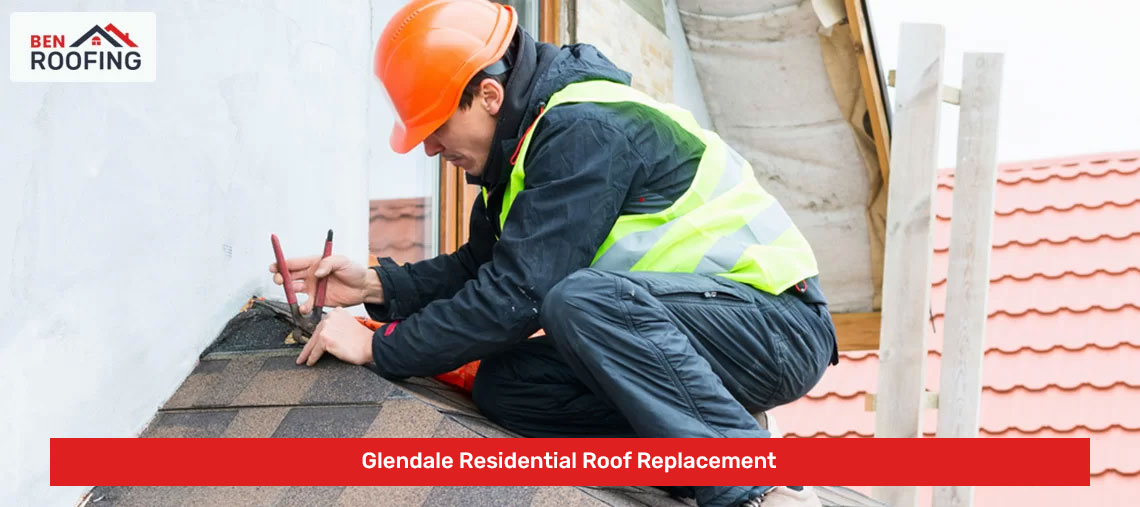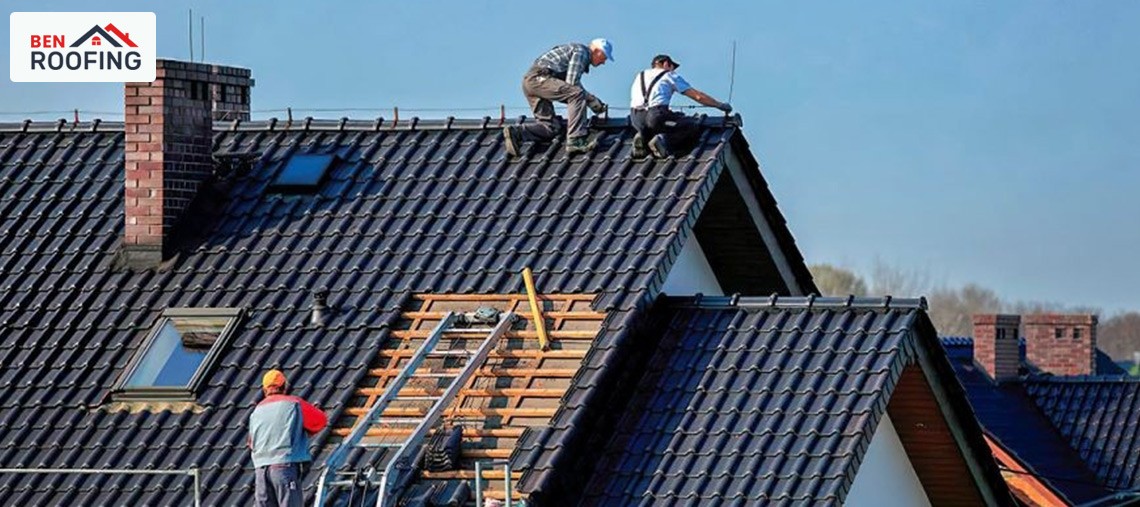Situations When You Should Replace Your Roof
There are several situations when you should consider opting for residential roof replacement in Glendale:

- Age of the Roof: If your roof is approaching or has exceeded its expected lifespan, typically around 20-25 years for asphalt shingles, it may be time for a replacement. Aging roofs become more susceptible to damage and can develop leaks or structural issues.
- Extensive Damage: If your roof has suffered significant damage from severe weather events like hailstorms, strong winds, or heavy rainfall, repairs may not be sufficient. Extensive damage can compromise the integrity of the roof, necessitating a complete replacement to ensure proper protection.
- Leaks and Water Damage: Persistent roof leaks that are not adequately addressed can lead to water damage, mold growth, and structural issues within your home. If the leaks are widespread or recurrent, it may be more cost-effective and practical to replace the roof altogether.
- Shingle Deterioration: If your shingles are showing signs of deterioration, such as curling, cracking, missing granules, or bald spots, it indicates that they have reached the end of their lifespan. Damaged shingles compromise the roof’s ability to shield against the elements and require replacement.
- Energy Efficiency Concerns: An outdated or poorly insulated roof can contribute to energy loss and increased utility bills. If you notice a significant increase in heating or cooling costs, a roof replacement with improved insulation can enhance energy efficiency and reduce energy consumption.
- Home Renovation: If you’re planning a significant home renovation that involves altering the roofline, adding an extension, or changing the roof’s structure, it’s often advisable to replace the roof during the renovation process to ensure consistency and structural integrity.
Making Energy-Efficient Glendale Roof Replacement
Choose Energy-Efficient Roofing Materials: Opt for roofing materials that are known for their energy efficiency. Some options include cool roofs, which have reflective properties to reduce heat absorption, or materials with high thermal insulation properties like metal or clay tiles.
Here are some of the options that you can consider:
| Roofing Material | Average Energy Savings |
| Cool Roofs | Up to 15% on cooling costs |
| Metal Roofs | Up to 25% on heating and cooling costs |
| Clay Tile Roofs | Up to 30% on cooling costs |
| Slate Roofs | Up to 30% on cooling costs |
| Green Roofs | Up to 50% on cooling costs |
Improve Insulation: Enhance the insulation of your roof by adding additional insulation layers during the replacement process. Insulation helps regulate temperature and reduce heat transfer between the interior and exterior of your home, leading to improved energy efficiency.
Proper Ventilation: Ensure that your roof replacement includes adequate ventilation. Proper ventilation helps remove excess heat and moisture from the attic, preventing the accumulation of heat that can impact the energy efficiency of your home. This can be achieved through ridge vents, soffit vents, or powered attic fans.
Seal Air Leaks: During the roof replacement, pay attention to sealing any air leaks around vents, chimneys, skylights, or other openings in the roof. These leaks can lead to air infiltration and loss of conditioned air, affecting energy efficiency. Proper sealing prevents drafts and maintains a more stable indoor temperature.
Roof Replacement Work After Heavy Weather Damage
After experiencing heavy weather damage, Glendale residential roof replacement becomes a crucial step to restore the integrity and protection of your home.

- Safety First: Prioritize personal safety and ensure that it is safe to access your roof after the weather event. Be cautious of any potential hazards, such as loose debris, fallen power lines, or compromised structures.
- Document the Damage: Take photographs or videos of the damage to provide evidence for insurance claims and to assist roofing professionals in assessing the extent of the repairs needed.
- Contact Your Insurance Company: Notify your insurance provider about the damage and initiate the claims process. Provide them with the necessary documentation and follow their instructions regarding assessments and inspections.
- Contact Our Team: Contact our team experienced in storm damage repairs and roof replacements. We will perform a thorough inspection to assess the damage and provide a detailed estimate for the necessary repairs or replacement.
- Temporary Repairs: In some cases, temporary repairs may be required to prevent further water infiltration until the roof replacement can take place. We will take appropriate temporary solutions to mitigate additional damage.
- Roof Replacement Process: After we have obtained the necessary permits, work will proceed with the roof replacement process. This involves removing the damaged materials, repairing any underlying structural issues, and installing new roofing materials that meet or exceed local building codes.
- Compliance and Quality: Ensure adherence to relevant building codes, regulations, and safety standards throughout the replacement process.
- Regular Maintenance: After the roof replacement, follow the recommended maintenance practices provided by the roofing contractor to extend the lifespan of your new roof. This includes periodic inspections, cleaning of gutters, and prompt repair of any minor issues that may arise.

